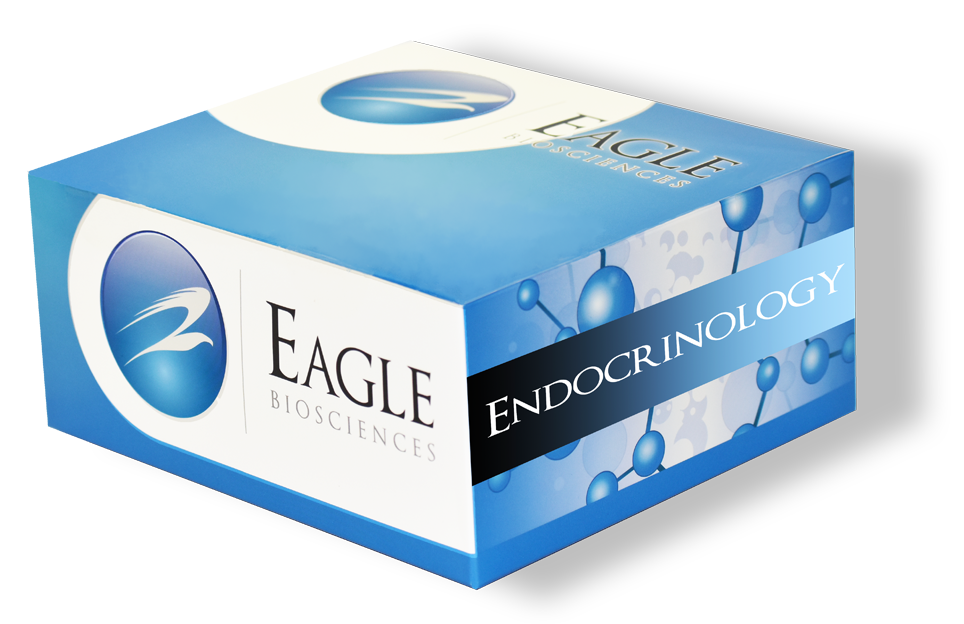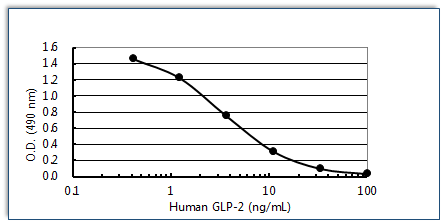Human GLP-2 ELISA Assay
The Human GLP-2 ELISA Assay is For Research Use Only
Size: 1×96 wells
Dynamic Range: 0.412 – 100 ng/mL
Incubation Time: 20 hours
Sample Type: Serum, Plasma
Sample Size: 25 µL
Specificity: This Human GLP-2 ELISA is highly specific to human GLP-2 and shows cross-reactivity to neither glucagon (rat/mouse/human) nor GLP-1 even at a concentration of 300 pmol/mL.
Alternative Name: Glucagon-like Peptide 2
Stability and Storage
Storage: Store all the components at 2~8°C.
Shelf: life The kit is stable under the condition for 19 months from the date of manufacturing. The expiry date is stated on the package.
Package: For 96 tests per one kit including standards.
Assay Principle
This Human GLP-2 ELISA Assay kit for determination of human GLP-2 in plasma and serum samples is based on a competitive enzyme immunoassay using combination of highly specific antibody to human GLP-2 and biotin-avidin affinity system. To the wells of the plate coated with goat anti rabbit IgG, standard antigen or samples, biotinylated human GLP-2, and rabbit anti GLP-2 antibody are added for competitive immunoreaction. After incubation and plate washing, horse radish peroxidase (HRP) labeled streptoavidin (SA) is added to form HRP labeled SA – biotinylated GLP-2 – antibody complex on the surface of the wells. Finally, HRP enzyme activity is determined by o-phenylenediamine dihydrochloride (OPD) and the concentration of human GLP-2 is calculated.
Related Products
Rat GLP-2 ELISA Assay
Mouse GLP-2 ELISA Assay Kit
Human GIP (Active) ELISA Assay Kit



